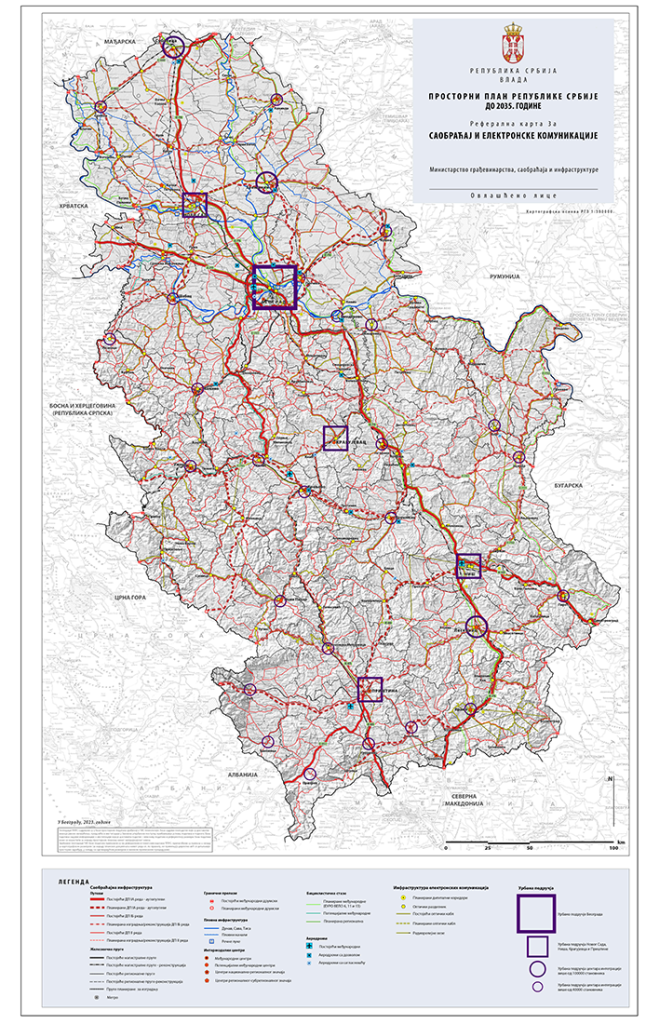Spatial Plan of the Republic of Serbia 2035
The Spatial Plan of the Republic of Serbia 2035 (SPRS 2035) is the third national planning document. This type of plan provides a long-term strategic framework and serves as a basic planning instrument for managing spatial development at the national scale. Currently, the SPRS 2035 is in the adoption procedure.
- Institute of Architecture and Urban & Spatial Planning of Serbia (IAUS)
- Faculty of Geography of the University of Belgrade
- Faculty of Architecture of the University of Belgrade
- Institute of Transportation CIP, Belgrade
- Public Company Institute for Urban Planning of Vojvodina, Novi Sad
- GDi Belgrade.
In addition to decades of continuity in planning, as well as analysis of achieved results (such as revision of strategic priorities from national plans adopted in 1996 and 2010 and the analysis of reports on the implementation of national and regional spatial plans), the development of SPRS 2035 was also based on the priorities of the National Investment Program 2025 (“Serbia 2025”), other strategies and public policies, research, inputs given by public institutions and bodies, international frameworks and documents. In order to determine the basis of sustainable territorial development in the preparation of this plan, the integrated, problem-based and participative approach was applied.
As far as the administrative steps are concerned, the following procedure has been followed so far:
- Governmental Decision on the preparation of the Plan made in June 2019 (“Official Gazette of the RS”, Nº 48/19)
- Strategic Environmental Assessment (SEA) prepared in parallel with the Draft Plan
- Early public hearing conducted in March 2020
- Public hearing conducted from April 5th to May 5th, 2021
- Planning Commission public sessions held in June and July 2021
- Over 500 comments and suggestions received from interested parties
VISION AND STRATEGIC GOAL
- The vision of the long-term spatial development of the Republic of Serbia includes balanced territorial development based on the principles of economic, social and territorial cohesion, with a higher and more equable quality of life and environment, preserved identity and diversity of space that is adapted to climate changes.
- The strategic goal includes: sustainable and balanced spatial development, mitigation of regional differences and a greater degree of territorial cohesion in order to improve the quality of life, slowing down unfavorable demographic processes and creating conditions for young people to stay in the country, while improving competitiveness and accessibility, strengthening territorial capital and preserving the identity of space, adaptation of settlements and activities in the area to climate change.

